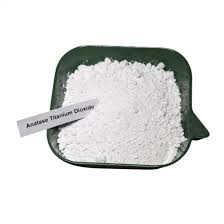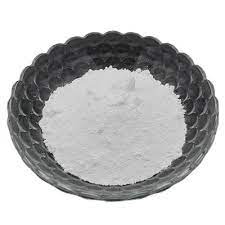In the industrial coatings sector, titanium dioxide (TiO2) is one of the most indispensable white pigments available today. With exceptional brightness, opacity, and UV resistance, titanium dioxide is widely used across applications such as automotive paints, architectural coatings, marine finishes, and heavy-duty industrial protective layers. However, not all TiO2 is created equal. The two primary crystalline forms used in coatings—rutile and anatase—possess distinct properties that influence the performance and suitability of coatings in different environments.
This article provides a comprehensive comparison between rutile and anatase titanium dioxide in industrial coatings, helping manufacturers, formulators, and end users make informed choices based on their unique requirements.
What Is Titanium Dioxide?
Titanium dioxide is a naturally occurring oxide of titanium and is prized for its superior whiteness and light-scattering properties. It exists primarily in three crystalline forms:
1. Rutile
2. Anatase
3. Brookite (less common and not used in commercial applications)
Among these, rutile and anatase are the main forms used in industrial applications due to their desirable pigmentary and functional characteristics.

Key Properties of Rutile and Anatase TiO2
1. Crystal Structure and Refractive Index
Rutile: Has a tetragonal crystal system and a higher refractive index (~2.73). This makes rutile more effective at scattering light, resulting in greater opacity and brightness.
Anatase: Also has a tetragonal crystal structure but with a slightly lower refractive index (~2.55), offering less opacity and gloss compared to rutile.
2. Photocatalytic Activity
Anatase: Exhibits strong photocatalytic activity, which means it can generate reactive oxygen species under UV light. While this property is beneficial for self-cleaning surfaces, it can lead to the degradation of organic binders in coatings, reducing durability.
Rutile: Shows much lower photocatalytic activity, making it more stable in exterior applications where exposure to sunlight is a concern.
3. UV Stability
Rutile: Offers superior UV resistance due to its stable structure and low reactivity, making it ideal for outdoor coatings.
Anatase: More prone to UV-induced degradation, which can compromise the longevity of the coating film.
4. Color and Brightness
Anatase: Typically has a bluer undertone and higher brightness, making it desirable for applications requiring brilliant whiteness.
Rutile: Provides a warmer tone and slightly less brightness but compensates with better hiding power.
Industrial Coating Applications
1. Exterior Architectural Coatings
Rutile is the preferred choice due to its excellent UV resistance and weather durability. It maintains gloss and color over time, even under harsh environmental conditions.
2. Interior Wall Paints
Anatase is often used for interior paints where UV exposure is minimal. Its high brightness and low cost make it a suitable option for decorative applications.
3. Automotive and Transportation Coatings
Rutile dominates this segment, particularly in topcoats and primers, due to its strong hiding power, resistance to chalking, and UV stability. These properties are essential for maintaining aesthetics and corrosion protection in vehicles and industrial equipment.
4. Industrial Protective Coatings
For marine, chemical, and industrial structures exposed to extreme conditions, rutile-based TiO2 ensures long-term durability, superior adhesion, and resistance to environmental stress.
5. Powder Coatings
Both anatase and rutile can be used depending on the end-use environment. Rutile is generally preferred for outdoor or high-performance powder coatings, while anatase may be acceptable for indoor or decorative finishes.

Economic and Processing Considerations
Cost: Anatase is typically less expensive to produce than rutile, offering economic advantages for budget-sensitive applications.
Processing: Rutile TiO2 is often treated with surface coatings (such as silica or alumina) to enhance dispersibility and reduce reactivity. Anatase may be used untreated or with minimal surface modification, making it easier to process in some formulations.
Sustainability and Environmental Impact
Anatase's photocatalytic properties are being explored for environmentally friendly applications like air purification and anti-bacterial surfaces. However, in protective coatings, this same property can become a liability by accelerating binder degradation. Rutile, with its inert nature, offers better lifecycle performance and less maintenance.
About Wuxi CHTI New Material Co., Ltd.
Wuxi CHTI New Material Co., Ltd. was established in 2015, and its main product is titanium dioxide. It is one of the CHTI sales companies and has established long-term and stable cooperative relations with other domestic factories. The main products are high-grade rutile, anatase, and titanium white enamel, and the extended products include v
anadium and ferrous sulfate. These materials are widely used in coatings, plastics, inks, paper, brake pads, enamel, welding materials, steel, metallurgy, sewage treatment, new energy batteries, and other fields.
With deep industry experience and strong partnerships, Wuxi CHTI New Material Co., Ltd. delivers consistent quality and reliable supply for a wide variety of industrial applications.

Final Thoughts
Selecting the right titanium dioxide grade is critical to achieving optimal coating performance, longevity, and cost-efficiency. While anatase may serve well in low-exposure or decorative applications, rutile remains the gold standard for high-performance and exterior industrial coatings.
As technologies evolve and sustainability becomes increasingly important, manufacturers must balance performance with environmental responsibility. Understanding the nuanced differences between rutile vs. anatase titanium dioxide enables smarter formulations and longer-lasting protective solutions.
Why Is Rutile Titanium Dioxide More Suitable for High-Performance Coatings
www.wxchti.com
Wuxi CHTI New Materials Co., Ltd.






+ There are no comments
Add yours